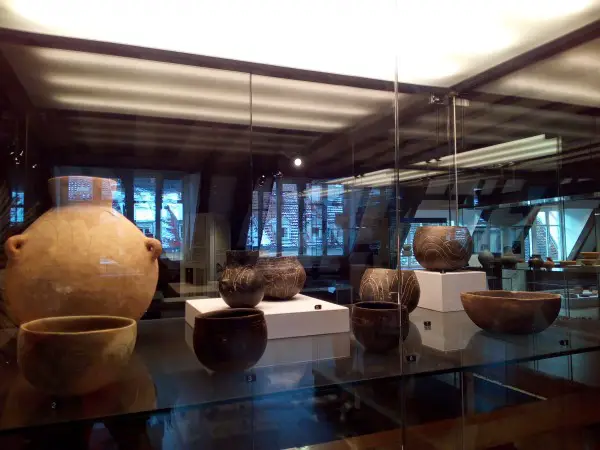Milk was used by the earliest farmers from Central Europe in the early Neolithic era some 7,400 years ago, according to a new study. This improved humans’ ability to derive nutrition from milk and established the early foundations of the dairy business.
The international research project, which was led by the University of Bristol and published today in the Proceedings of the National Academy of Sciences (PNAS), utilised a ground-breaking method in order to date dairy fat traces that had been preserved in the walls of pottery vessels dating back to the 54th century BC. The fact that this technique focuses on fatty acids derived from animal fat residues gives it a distinct advantage over other approaches when it comes to determining when new types of foods were first consumed in prehistoric periods.
The study’s lead author, Dr. Emmanuelle Casanova, who completed PhD in archaeological chemistry at the University of Bristol, said it is wonderful to be able to pinpoint the exact beginning of milk extraction by humans in prehistoric periods. The emergence of agropastoralism allowed for the introduction of new food items, such as milk and milk products, into the diet of prehistoric humans. This alteration in the diet has remained until the present.

The Linearbandkeramik (LBK) culture was comprised of the first Neolithic farming communities to establish themselves in Central Europe. These settlers came from South East, East, and West Europe. The results of this investigation indicated that a number of the very first people to arrive in the area used milk on a large scale.
The NeoMilk project, financed by the European Research Council (ERC), and directed by Professor Richard Evershed, FRS, of the School of Chemistry at the University of Bristol, conducted the research. More than 4,300 pottery pots from seventy different LBK communities were evaluated by his team for the presence of food leftovers. Only 65 per cent of the sites presented evidence of dairy fats in pottery vessels, which suggests that milk consumption, while common, was not uniformly accepted by these early farmers. The data revealed significant heterogeneity in milk use across the region.
By concentrating on the locations and pottery that contained dairy residues, the researchers were able to generate approximately thirty new radiocarbon dates in order to trace the beginning of dairy production by LBK farmers. These new dates correspond to the beginning of human habitation in the LBK region about the middle of the sixth millennium BC.
The Dobó István Castle Museum, Historic England, and the LVR-State Service for Archaeological Heritage, which oversaw excavations at the sites that were being investigated for the study, were all involved in the research along with archaeologists from the University of Gdansk, chemists from the University of Bristol, Paris 1, Strasbourg, Leiden, and Adam Mickiewicz.
According to Professor Evershed, who was also a co-lead author on the study, the significance of this investigation cannot be overstated because it reveals new information regarding the sequence of events that led to significant shifts in the methods that were used to acquire human food as those methods developed in Europe. Despite differences in the extent of the activity, it demonstrates without a reasonable doubt that dairy products were readily available to a large population during the Early Neolithic.
NeoMilk project
This project investigates the Mesolithic-to-Neolithic transition that occurred in Northern and Central Europe beginning around 8,000 years ago, focusing on the introduction and spread of cattle-based agriculture by Neolithic Linearbandkeramik (LBK) farmers. It also investigates the implications of this transition for modelling the Mesolithic-to-Neolithic transition. This revolutionary shift in humankind’s strategy for subsistence completely reshaped prehistoric Europe’s culture, biology, and economy in ways that are fundamental to modern life pretty much everywhere in the world. These shifts laid the groundwork for the evolution of Lactase Persistence (LP) in modern Europeans, while the modern dairy sector, which is worth multiple billions of euros, is a direct consequence of human-induced biological reformulations accomplished during this pivotal time in European prehistory. Understanding the shifting roles that animals play in the diets, economics, and evolutionary genetics of the LBK people requires an understanding of the peculiar pottery that identifies the LBK.
Three research themes are integrated into the project. The first is Lipid biomarker and stable isotope analyses of food residues in LBK pottery to provide assessments of the major animal products acquired and processed, as well as to test hypotheses emerging from recent genetic studies indicating the LBK as the core region for the emergence of LP. The second is state-of-the-art analyses, including stable isotope studies of domesticated animal teeth (and bone). And the third is herding and slaughtering practices for cattle and sheep/goats and wild/hunted. The study will present a one-of-a-kind picture of animal exploitation and milk usage across the entire spatiotemporal range of the LBK, all while being placed within an appropriate environmental and cultural context.
